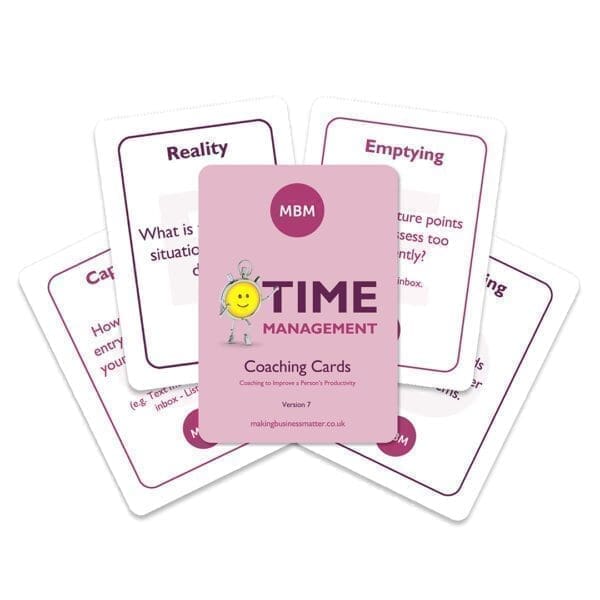Having Effective Team Tactics to Better Achieve Your Company Goals and Objectives
Team tactics refer to the coordinated strategies, plans, and actions that a group of individuals employ to achieve specific goals or objectives. All in all, team tactics focus on something the whole team has to do. For example, project planning and execution in organisations, and park the bus or tiki-taka in the world of games.
Now, here’s the question. Are you currently using effective team tactics to create direction and achieve results? Well, if not, you may be facing a number of difficulties in finishing tasks and projects efficiently. But never fear, we are here to help make things easier and more effective for you and your team.
All in all, having effective team tactics for your company can achieve great results. Luckily, in this article, we will look at everything you need to know about team tactics. First, we will cover what they are. Next, we will see why they are important, as well as possible barriers you may face. Then, we will look at some best practices that will make them more effective. Finally, we will P.L.A.N. in order to have better team tactics. Let’s get started.
What are Team Tactics?

Now here’s another take on the definition. Team tactics are the specific actions, strategies, and manoeuvres your team uses during a particular activity or competition to achieve your goals and objectives. Also, these tactics can be short-term or long-term, and they vary depending on your specific needs.
They have a number of uses, such as:
- Responding to the changing dynamics of a situation.
- Adapting to the opponent’s actions or market conditions.
- Utilising the strengths and expertise of team members.
- Achieving specific targets and milestones.
- Lastly, it enhances teamwork and collaboration.
There are various tactical approaches that can be employed, such as adopting different formations, making timely substitutions, leveraging data analytics, or implementing agile methodologies. Note, the key is to choose the tactics that best suit your team’s strengths and objectives.

>> Time Management Coaching Cards <<
>> Access on Amazon <<
Why Are They Important?
Effective team tactics can lead to several significant benefits for you and your team. So it’s important to recognise the impact that well-executed tactics can have on achieving success.
Some of these benefits include:
- Gaining a competitive advantage.
- Improving decision-making under pressure.
- Enhancing team cohesion and coordination.
- Increasing adaptability and flexibility.
- Maximising productivity and efficiency.
- And finally, boosting motivation and morale.
Based on these advantages, team tactics play a vital role in the overall success of your team. So by using the right tactics, you can overcome challenges and outperform your competitors, leading to better results.
Real World Case: Apollo 11 Moon Landing

The Apollo 11 mission, led by NASA in 1969, demonstrated remarkable team tactics in executing the first human moon landing. The mission involved astronauts Neil Armstrong, Buzz Aldrin, and Michael Collins.
All in all, the team at NASA worked cohesively, with clear roles and responsibilities, to ensure the success of each stage of the mission. From the launch to the lunar landing and safe return to Earth, the team coordinated their efforts and communicated effectively to achieve one of humanity’s greatest accomplishments.
Sticky Learning ® is 7 times more effective than 1-day training courses. Plus, you will get a Chain of Evidence proving your Return on Investment. Discover soft skills training that changes behaviours long term.

Barriers to Effective Team Tactics
However, there are potential barriers that may hinder the successful implementation of team tactics. Being aware of these barriers and finding ways to overcome them is crucial for achieving better results.
#1- Resistance to Change
To start, one common barrier is resistance to change. Some team members might be reluctant to adopt new tactics or strategies, particularly if they are accustomed to certain ways of doing things. Now overcoming this resistance requires effective communication, demonstrating the benefits of the proposed tactics, and involving team members in the decision-making process.
#2- Lack of Coordination
Effective team tactics require coordination and synchronisation among team members. Consequently, if there is a lack of communication and collaboration, it can lead to disjointed efforts and decreased effectiveness. Encouraging open communication and promoting a team-oriented culture can help address this barrier.
#3- Inadequate Training
If team members are not adequately trained to execute certain tactics, they may struggle to implement them effectively. Thus, providing appropriate training and development opportunities ensures that everyone is equipped with the skills and knowledge needed to execute the tactics successfully.
#4- External Factors
External factors such as unexpected challenges, market changes, or competitor actions can also impact the effectiveness of team tactics. Hence, teams need to be adaptable and have contingency plans in place to respond to these external influences.
#5- Lack of Data and Analysis
Making informed decisions based on data and analysis is important for effective team tactics. Specifically, if a team lacks access to relevant data or fails to analyse it properly, their tactical choices may be suboptimal. Hence, investing in data analytics capabilities and promoting a data-driven approach can help overcome this barrier.
Best Practices for Effective Team Tactics

Now, let’s explore some best practices and key elements for effective team tactics. By following these practices, you can increase the likelihood of achieving your desired outcomes.
1. Study and Understand the Opponent
Before creating tactics, thoroughly study and understand your opponents or market conditions. To be specific, analyse their strengths, weaknesses, and patterns to identify potential opportunities for your team to exploit. All in all, this will inform your tactical decisions and give you a competitive edge.
2. Foster a Culture of Innovation
Encourage creativity and innovation within your team. Foster an environment where team members feel comfortable suggesting new ideas and approaches to problem-solving. All in all, innovation can lead to breakthrough tactics that set your team apart.
3. Practice and Rehearse
Consistent practice and rehearsal are important for the effective execution of tactics. So regularly simulate scenarios, engage in drills, and conduct mock competitions to improve your team’s abilities and coordination. This will improve their tactical execution under real pressure.
4. Emphasise Adaptability
Finally, tactics should not be rigid. In fact, they must be adaptable to changing circumstances. So train your team to be flexible and ready to adjust their tactics as the situation evolves. All in all, this adaptability will give your team a competitive advantage in dynamic environments.
Use P.L.A.N. for Effective Team Tactics

Finally, in order to put these elements into play, we use P.L.A.N. for effective team tactics.
1. Prepare
The first stage is preparation. Thoroughly analyse your team’s strengths and weaknesses, as well as those of your opponents. Also, identify the key areas where tactics can make a difference. Engage the team in this process, gathering insights and perspectives from different members.
2. Launch
Next, it’s time to apply the chosen tactics. Launch them during training sessions or actual competitions. And communicate the tactics clearly to the team and ensure that everyone understands their roles and responsibilities.
3. Analyse
After implementation, regularly analyse the effectiveness of the tactics. Gather feedback from the team and assess the outcomes of using these tactics in real situations. Identify areas for improvement and make necessary adjustments.
4. Navigate
Lastly, navigate through challenges and unexpected situations. Be ready to adapt your tactics when needed. And provide clear guidance and leadership to help the team navigate successfully through difficult moments.
Wrap Up
All in all, having effective team tactics is important for achieving your company goals and objectives. By using best practices and the P.L.A.N. approach, your team can gain a competitive advantage, maximise productivity, and achieve greater success in all endeavours.
Well, did you enjoy this article? Then show your support on Linkedin.




